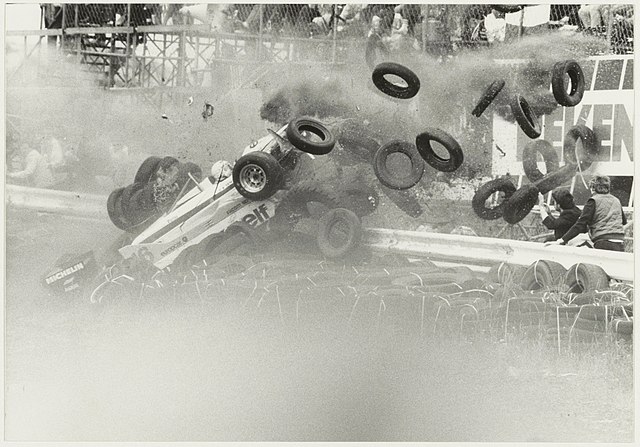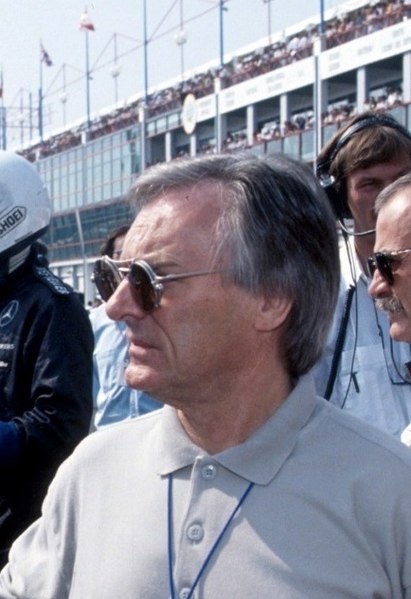The 1982 Dutch Grand Prix was a Formula One motor race held at Zandvoort on 3 July 1982. The race, contested over 72 laps, was the ninth race of the 1982 Formula One season and was won by Didier Pironi, driving a Ferrari, with Nelson Piquet second in a Brabham-BMW and Keke Rosberg third in a Williams-Ford.
Start of the race
Image: Met 250 km per uur vliegt René Arnoux tijdens de Grand Prix uit de bocht. NL Hlm NHA 54003946
Image: Arnoux's crash at 1982 Dutch Grand Prix
1982 Formula One World Championship
The 1982 FIA Formula One World Championship was the 36th season of FIA Formula One motor racing. It included two competitions run over the course of the year, the 33rd Formula One World Championship for Drivers and the 25th Formula One World Championship for Constructors. The season featured sixteen rounds between 23 January and 25 September. The Drivers' Championship was won by Keke Rosberg and the Constructors' Championship by Scuderia Ferrari.
The 1982 Drivers' Championship winner was Keke Rosberg
Ferrari won the Constructors' Championship with the 126C2.
Carlos Reutemann (pictured in 1981) stayed with the team of Frank Williams (right), only to retire from the sport after two races.
Bernie Ecclestone (pictured in 1991), owner of Brabham and chairman of FOCA, was one of the leading figures in the FISA–FOCA war.







